
Adie syndrome
Holmes–Adie syndrome: a benign neurological condition marked by tonic pupils and areflexia, historically mistaken for neurosyphilis.

Holmes–Adie syndrome: a benign neurological condition marked by tonic pupils and areflexia, historically mistaken for neurosyphilis.
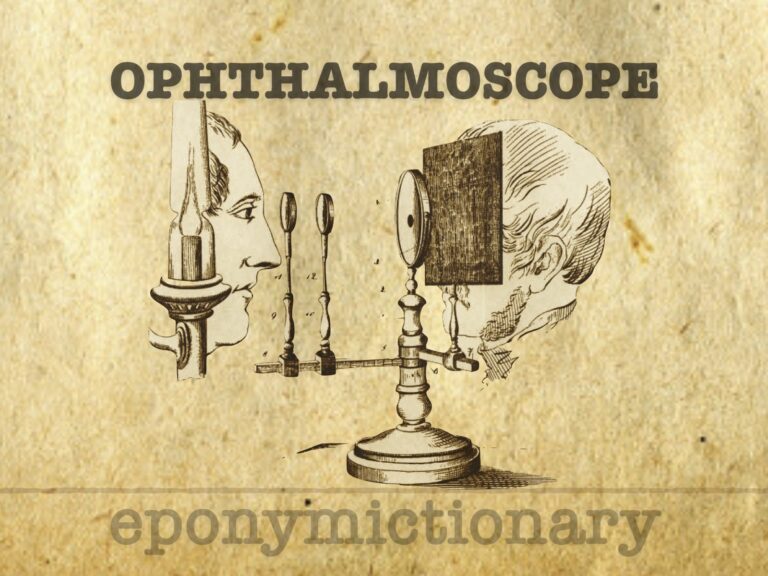
From ancient “cat’s‑eye” reflections to AI‑assisted retinal imaging: the story of the ophthalmoscope from Helmholtz’s 1851 Augenspiegel to digital, confocal and smartphone‑based system
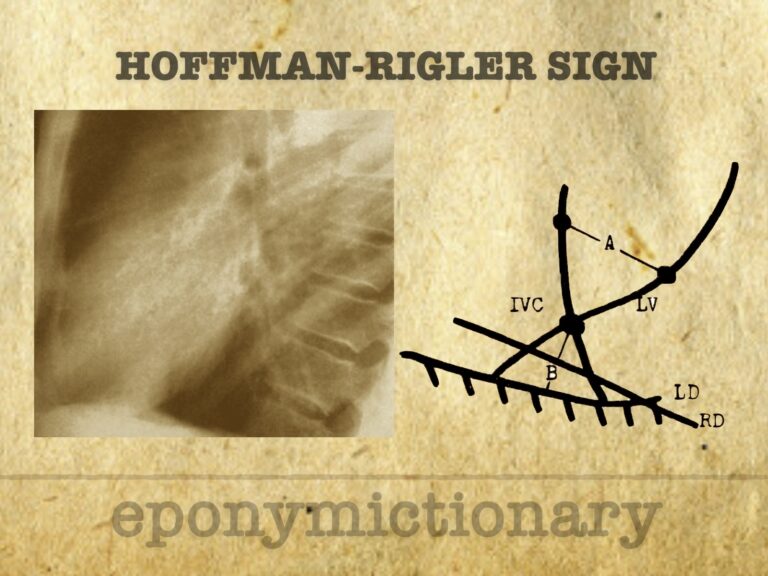
Radiographic sign of left ventricular enlargement on lateral chest X-ray, based on LV extension behind the IVC; described by Hoffman and Rigler in 1965

Rigler notch sign: Indentation in the border of a solid lung mass (thought to represent a feeding vessel) suggestive of a bronchial carcinoma

Rigler triad; Imaging findings in patients with gallstone ileus with an ectopic gallstone causing small bowel obstruction, and pneumobilia
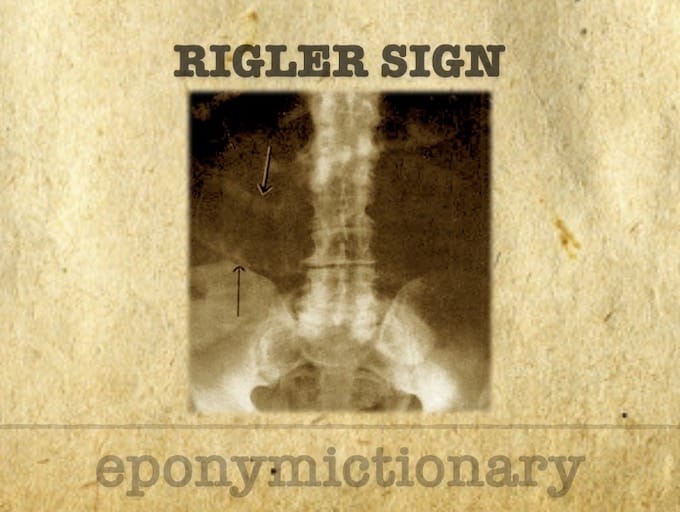
Radiological signs of pneumoperitoneum: history, diagnosis, and key eponyms including Rigler’s sign, Popper’s sign, football sign, and inverted V sign
Necrotizing fasciitis: life-threatening soft tissue infection, historically hospital gangrene, term coined by Ben J. Wilson in 1951
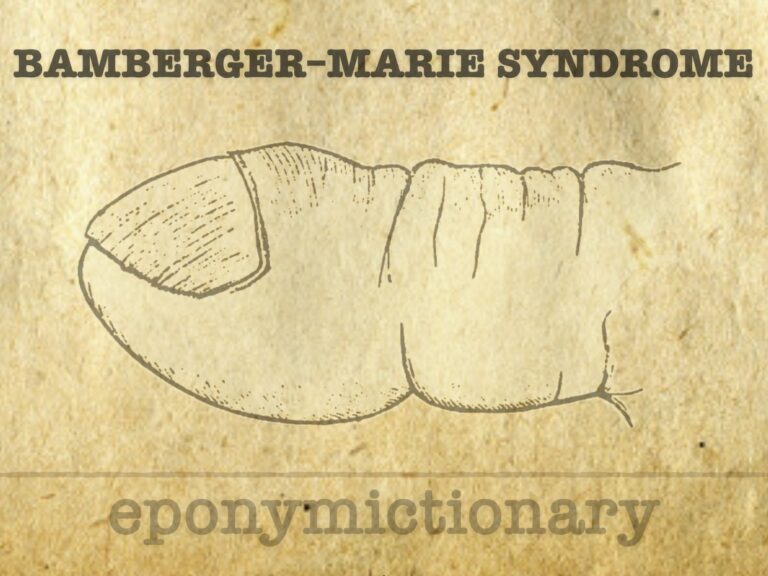
Bamberger–Marie syndrome (hypertrophic pulmonary osteoarthropathy): clubbing, bone periostosis, and joint effusions—historically recognised as a paraneoplastic syndrome linked to lung disease.
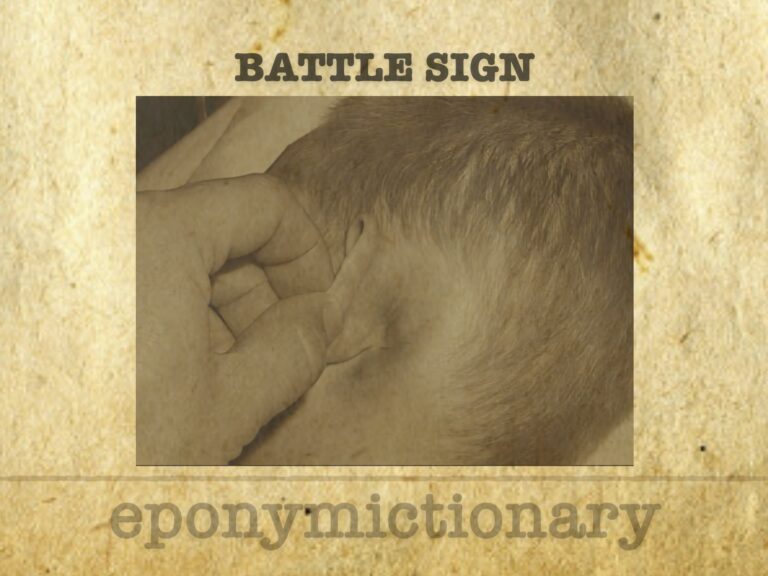
Battle sign: mastoid ecchymosis indicating basilar skull fracture, described by W.H. Battle in 1890; it holds >75% PPV for posterior fossa injury.
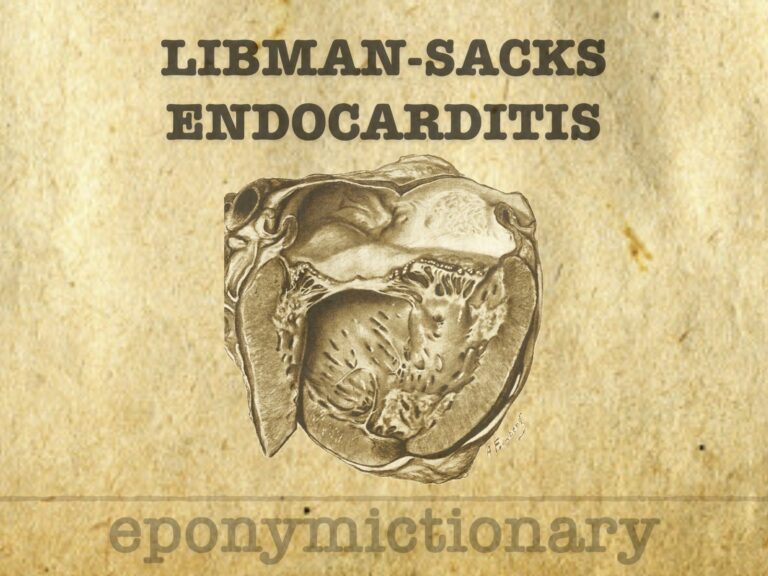
Libman–Sacks endocarditis is a sterile cardiac valve lesion linked to lupus and antiphospholipid syndrome, often detected via echocardiography

Charcot–Marie–Tooth disease (CMT) is the most common inherited neuropathy, encompassing genetically diverse subtypes of peripheral nerve dysfunction.

Common viral illness in infants caused by HHV-6. Roseola presents with high fever followed by sudden rash; also known as sixth disease or exanthem subitum.